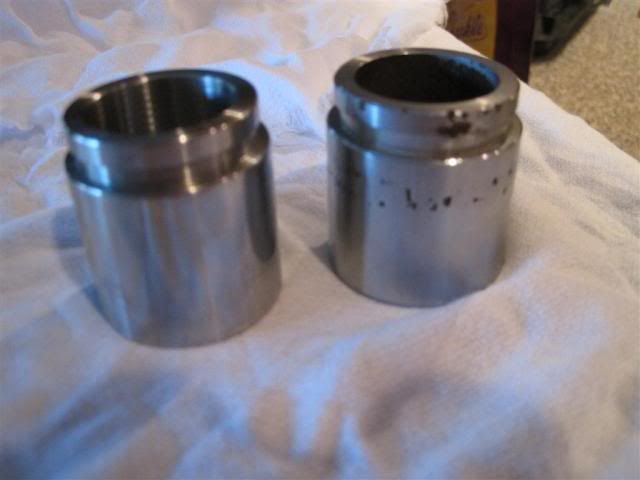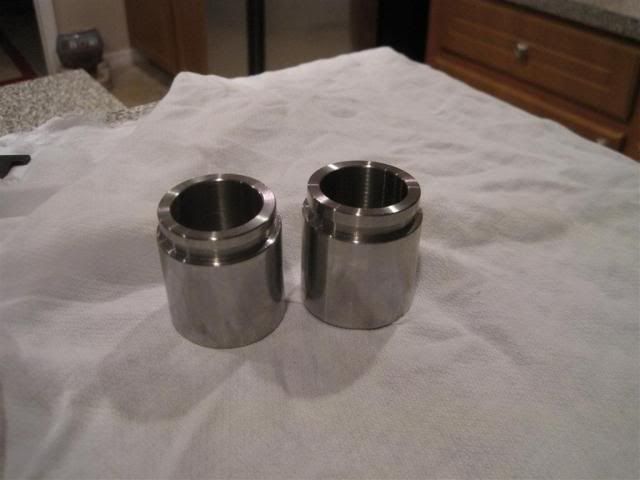I've never been very good at boring. Well, lets face it, I really don't have much skill with any of this yet. But boring has always been a challenge. I have a SB9A and an alloris AXA tool holder. What are the proper tools for boring, and facing blind holes?
I'm a hobbist, making tools and parts for my motorcycles. I'm now making a set of SS replacement brake pistons for an old bike.
I got the front ones done, working on the back ones now but this is really starting to tick me off. I can't get a good finish on the bore or the face of the blind hole.
This is what I have now. Lots of chatter and not too good for blind hole facing. Though the finish of the hole isn't important for function, I want to do it right.



I'm a hobbist, making tools and parts for my motorcycles. I'm now making a set of SS replacement brake pistons for an old bike.
I got the front ones done, working on the back ones now but this is really starting to tick me off. I can't get a good finish on the bore or the face of the blind hole.
This is what I have now. Lots of chatter and not too good for blind hole facing. Though the finish of the hole isn't important for function, I want to do it right.






